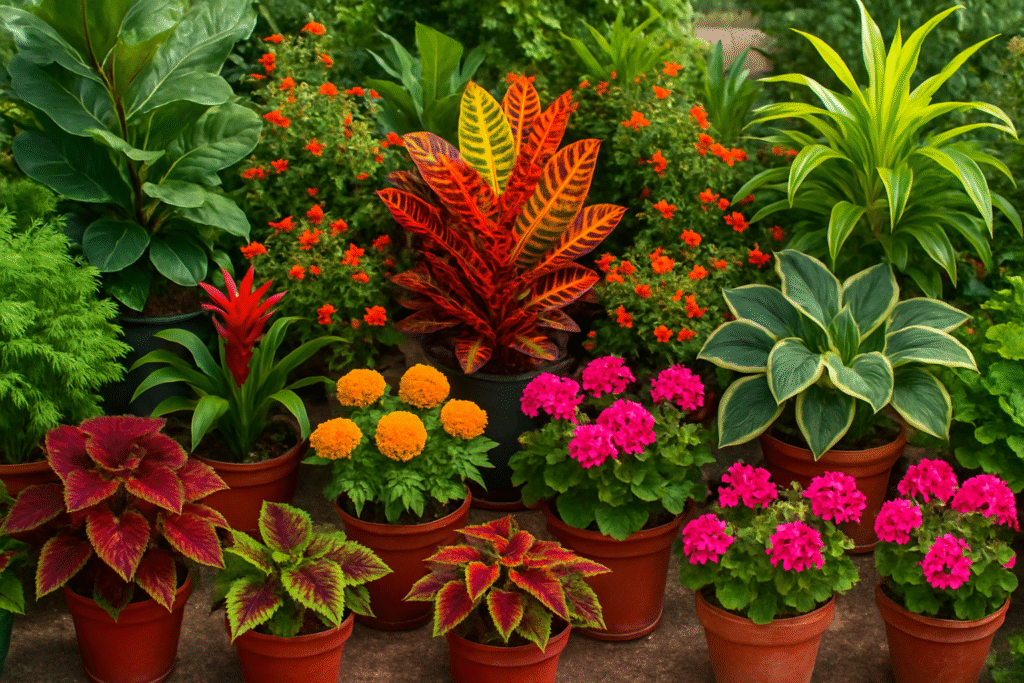
Propagating Plants to Save Money: A Beginner’s Guide to Growing More for Less
Have you ever found yourself eyeing a lush nursery display, wishing you could take home every beautiful plant—only to be stopped by the price tag? The good news is, you don’t have to break the bank to build your dream garden. Propagating plants to save money is one of the smartest and most rewarding strategies for gardeners of all experience levels. With just a few simple techniques and some patience, you can multiply your favorite plants at little to no cost. In this beginner’s guide, you’ll learn how to stretch your green thumb—and your budget—by turning one plant into many.
Table of Contents
Toggle What is Plant Propagation? (And Why It Matters)
What is Plant Propagation? (And Why It Matters)
Plant propagation is the process of creating new plants from existing ones. 
There are two main types:
- Sexual propagation (growing from seeds)
- Asexual propagation (using parts like cuttings, divisions, or leaves)
Asexual methods are especially popular for beginners because they’re fast, easy, and produce exact copies of the parent plant.
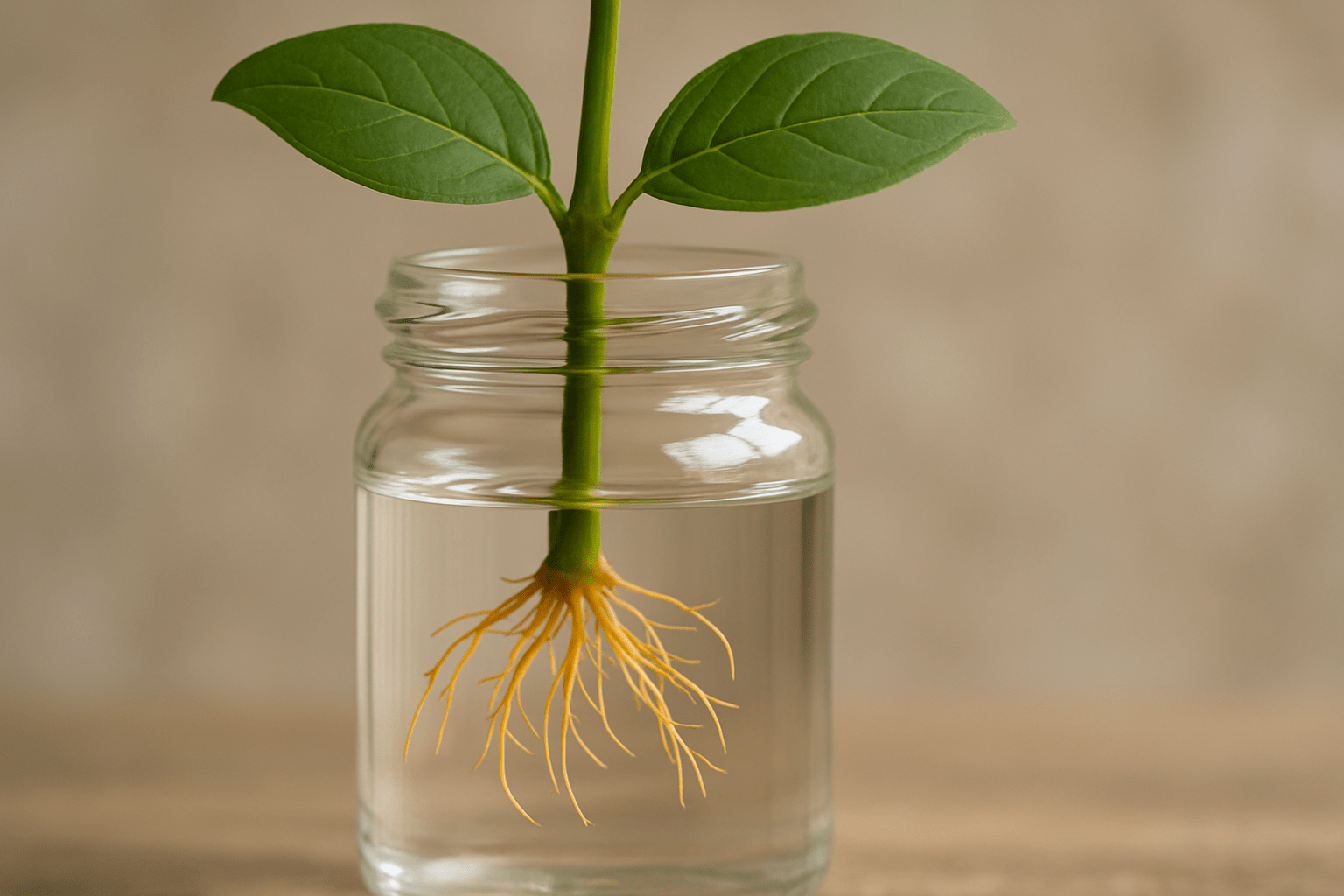
So, why does it matter?




Whether you’re working with succulents, herbs, or houseplants, propagating plants to save money is a smart and sustainable way to grow.
 Propagation Methods for Beginners
Propagation Methods for Beginners
When it comes to propagating plants to save money, knowing the right method is key. Luckily, many techniques are simple and perfect for beginners. Here are the easiest and most effective ways to get started:
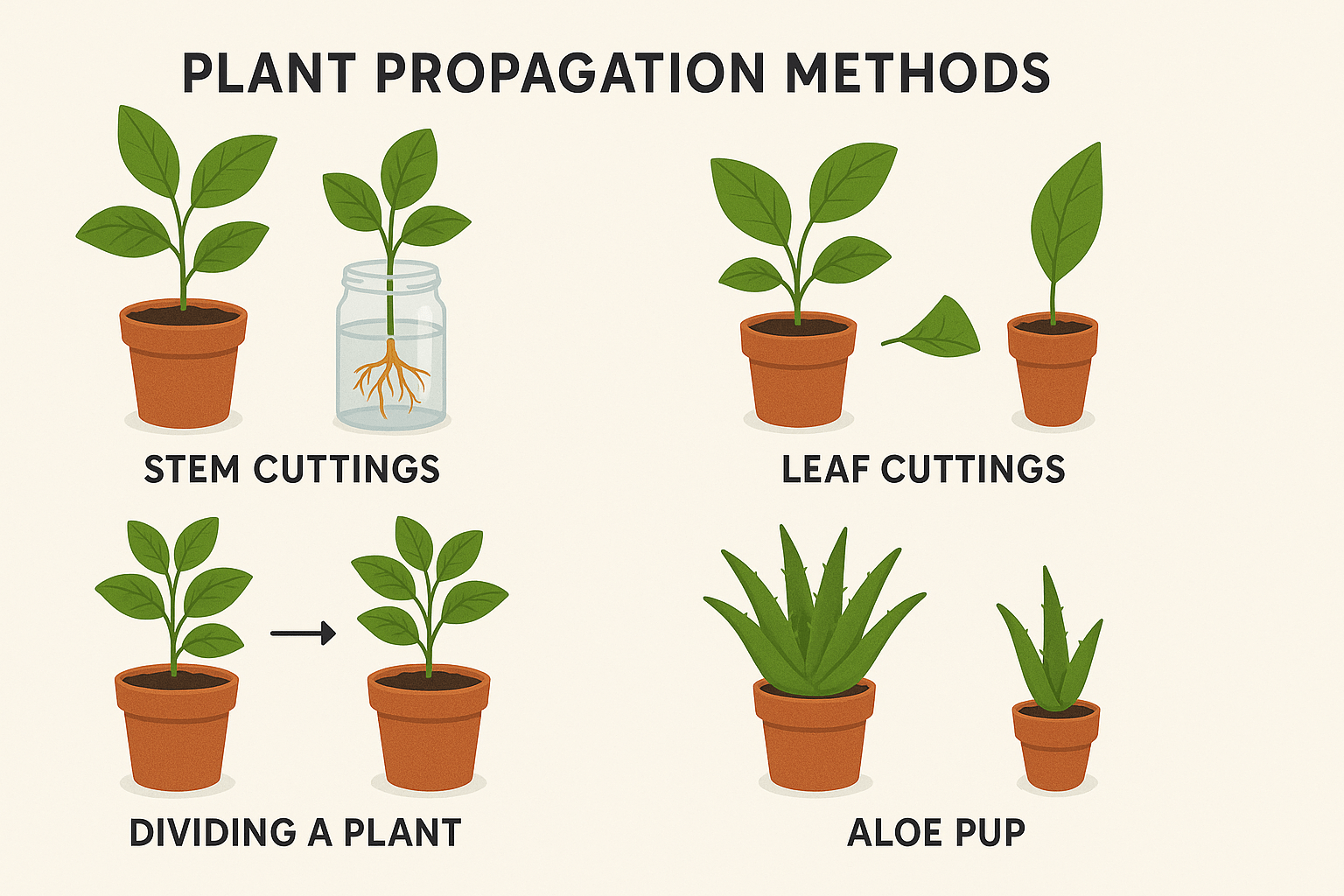
 1. Stem Cuttings
1. Stem Cuttings
One of the most popular methods. Just snip a healthy stem below a node, remove lower leaves, and place it in water or soil. Great for pothos, coleus, mint, and more.
Tip: Use clean scissors and keep the cutting in a warm, bright spot (but out of direct sun).
 2. Leaf Cuttings
2. Leaf Cuttings
Some plants, like succulents and African violets, can grow new plants from a single leaf. Gently remove a healthy leaf, let it dry for a day, then place it on moist soil.
Tip: Be patient—roots can take a few weeks to appear.
 3. Division
3. Division
This works best for plants that grow in clumps (like hostas, ferns, or ornamental grasses). Dig up the plant, gently separate the roots, and replant each section.
Tip: Water well after dividing to reduce shock.
 4. Offsets or Pups
4. Offsets or Pups
Many plants like aloe and spider plants produce baby plants (called “pups”) around their base. Gently pull or cut them off and pot them separately.
Tip: Wait until pups have their own roots before removing.
 5. Layering
5. Layering
For low-growing plants like strawberries or creeping thyme, simply pin a stem to the ground and cover it with soil. Once it roots, you can cut and replant.
Tip: Use a small rock or clip to hold the stem in place.
These beginner-friendly methods make it easy to grow your plant collection—and your savings. Just start with one technique, and you’ll be amazed at how quickly your garden grows!
Would you like a visual guide or printable checklist for these methods?
 Tools You’ll Need (But Keep It Simple!)
Tools You’ll Need (But Keep It Simple!)
You don’t need fancy equipment to start propagating plants to save money—just a few basic tools will do the job! Here’s what you’ll need to get started:

Clean, sharp blades make clean cuts that help plants heal faster. Always sterilize them before use to prevent disease.
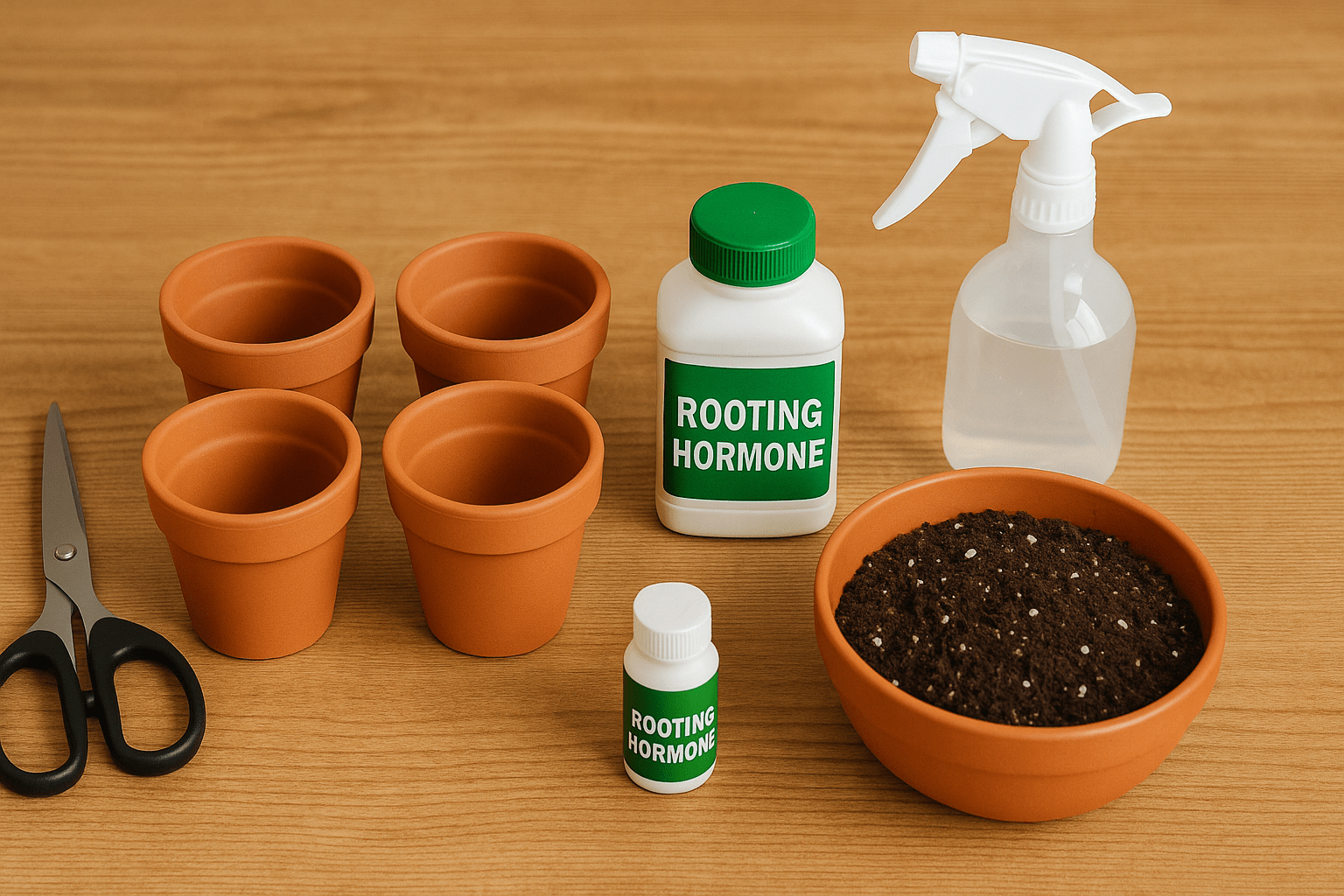

Use recycled containers or seed trays. Just make sure they have drainage holes!

This powder or gel helps some cuttings root faster, especially woody plants. It’s not essential, but it can boost success rates.

Use a light, well-draining mix. Avoid heavy garden soil—it can suffocate roots.

Gentle watering keeps cuttings moist without washing them out.

Covering cuttings helps retain moisture and mimic a greenhouse effect, especially for soft cuttings.
That’s it! With these simple tools, you’re all set to start growing more plants for less. Ready to dig in?
 Creating the Right Environment
Creating the Right Environment
To succeed in propagating plants to save money, creating the right environment is key. Plants need the proper balance of light, warmth, humidity, and airflow to thrive—especially in their early stages of growth.

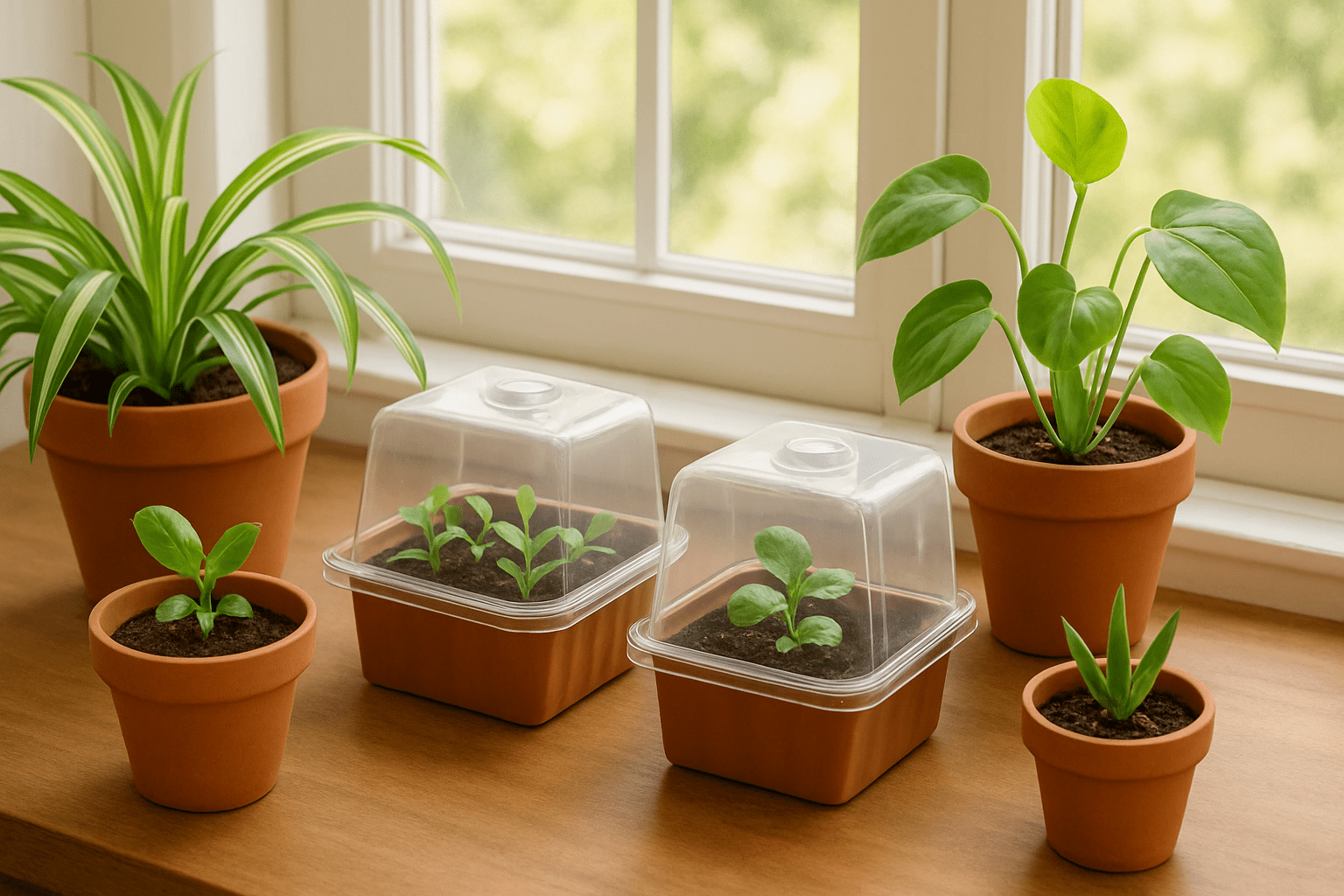



By giving your propagated plants the right growing conditions, you’ll set them up for strong, healthy roots—saving money and growing your garden with ease.
 Common Mistakes to Avoid
Common Mistakes to Avoid
Even the most enthusiastic beginners can stumble when propagating plants to save money. To help you succeed from the start, here are some of the most common mistakes—and how to avoid them:
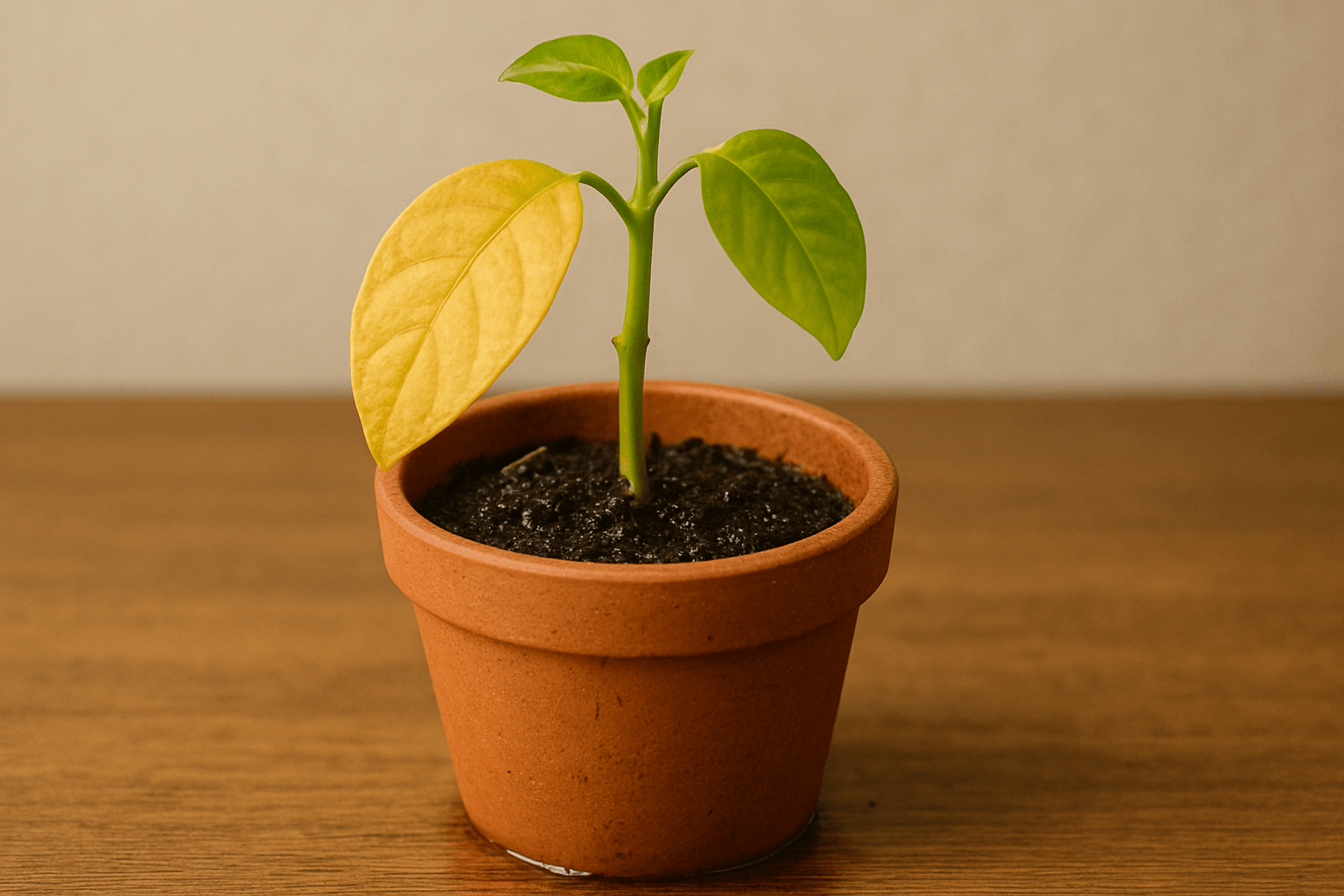

Always choose strong, disease-free plants for propagation. Sick or weak plants pass on problems and rarely root well.

Cut below a leaf node using clean, sharp scissors. A dull or dirty tool can damage the plant or introduce bacteria.

New cuttings need consistent moisture—not soggy soil. Too much water causes rot, too little dries them out.

Humidity helps cuttings root faster. Use a plastic dome, bag, or misting to maintain moisture in the air.

Place cuttings in bright, indirect light. Avoid harsh sun, which can scorch them, and low light, which slows growth.

Propagation takes time. Avoid checking or disturbing the cuttings too often—give roots time to develop.
By avoiding these pitfalls, you’ll increase your success rate and get more from every plant—helping you save money and grow with confidence.
 How to Track Your Progress
How to Track Your Progress
Tracking your success is key when propagating plants to save money. It helps you understand what’s working, what needs adjusting, and how much you’re actually saving. Here’s how to keep it simple and effective:

Record the date, method (cuttings, division, etc.), plant type, and results. This helps you spot patterns and improve your technique over time.
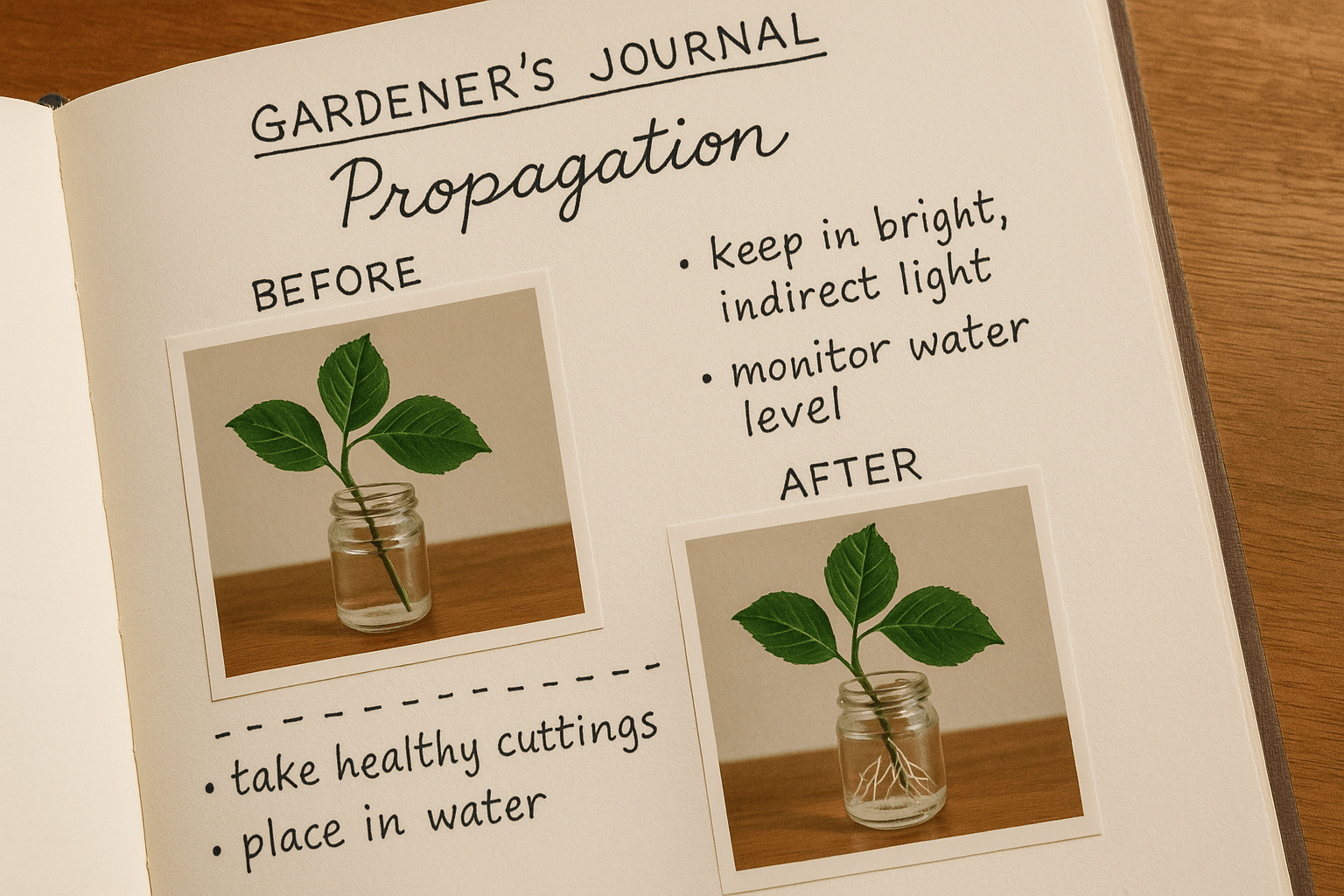

Photos are a great visual tool. Snap pictures of your cuttings when you start and again when they root or grow. It’s satisfying and informative!

Note how many plants you’ve propagated and compare that to store prices. For example, if a plant costs $10 and you’ve grown 5 from one mother plant, you’ve saved $50!

Use tags or markers to label new plants with the date and type. This helps prevent mix-ups and lets you track growth more easily.

Set goals like “Root 10 new plants this month” or “Save $100 on plants this season.” Goals keep you motivated and focused.
Tracking your progress not only boosts your skills but also shows just how much value you’re getting by propagating plants to save money. Keep it fun, simple, and consistent!
 Bonus Tips to Boost Your Success
Bonus Tips to Boost Your Success
Want to take your propagation game to the next level? These expert tips will help ensure you get more healthy, thriving plants while keeping costs low.

Place cuttings or seedlings in bright, indirect light. Too much sun can burn young plants, while too little slows growth.

Keep soil moist, not soggy. Overwatering is the fastest way to rot roots. Use a spray bottle for gentle, even watering.

Always use sanitized scissors, knives, and containers. Dirty tools can spread disease and kill your cuttings.

Propagation takes time. Don’t rush it—check regularly, but let nature do its work.

It’s easy to forget which cutting is which. Use labels or popsicle sticks to stay organized.
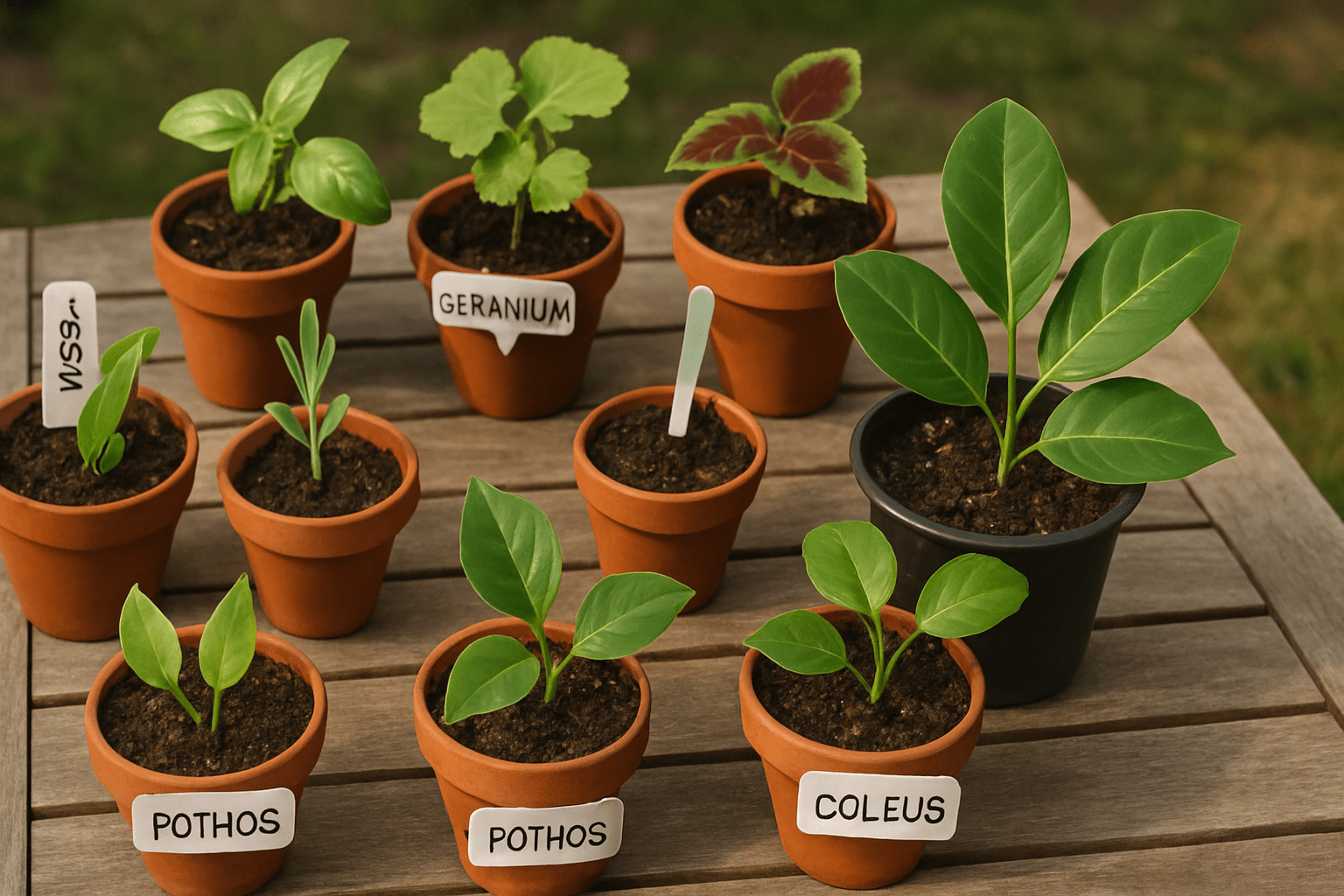

Not all cuttings take root. Propagate several at once to improve your chances of success.

A natural or store-bought rooting hormone can help speed up root growth—especially for hardwood cuttings.

Keep a simple log or take photos. It helps you learn what works best and spot problems early.
By following these bonus tips, you’ll increase your chances of success and make propagating plants to save money even more rewarding. 
 Final Thought
Final Thought
Propagating plants isn’t just a money-saving trick — it’s a rewarding way to deepen your connection with nature and grow your indoor or outdoor garden with purpose. 
Start with one method that feels easy and exciting to you. Don’t worry about having fancy tools or getting everything perfect — plants are forgiving, and with a little care and patience, they’ll reward you with new growth and green beauty.
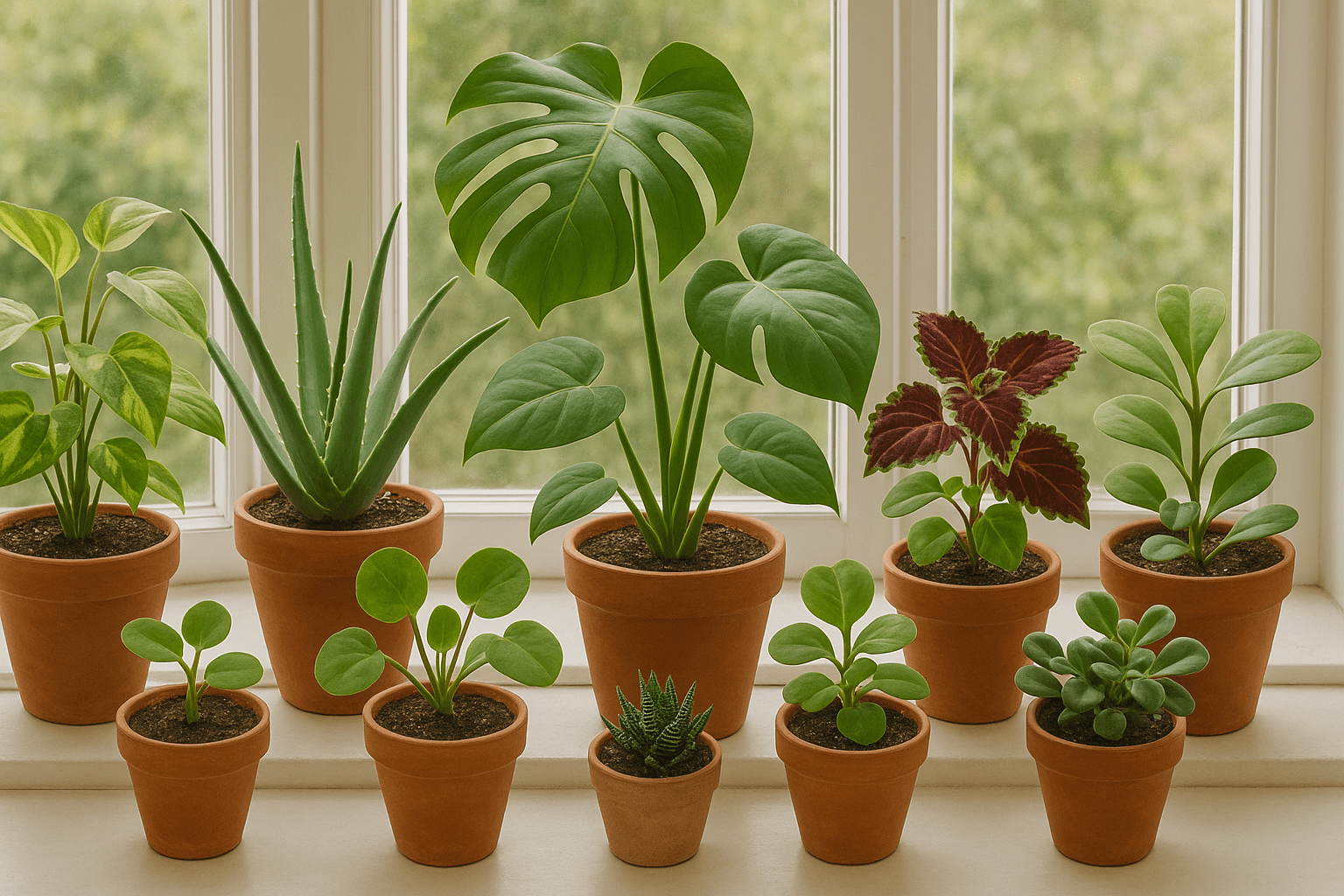
Remember: the goal isn’t perfection, it’s progress. Every cutting you root is one less plant to buy, and one more step toward a thriving, self-sustaining plant collection. So grab your scissors, pick your plant, and start propagating today. Your wallet — and your windowsill — will thank you!
Frequently Asked Questions(FAQ)
What is propagating plants to save money?
Propagating plants to save money involves creating new plants from existing ones through methods like cuttings, division, or seed sowing. This technique allows you to expand your garden without purchasing new plants, reducing the cost of buying nursery plants.
What are the most common methods for propagating plants?
The most common methods for propagating plants include:
- Cuttings: Taking a piece of stem, leaf, or root and encouraging it to grow roots in water or soil.
- Division: Separating a plant into smaller parts, each with roots, and replanting them.
- Layering: Bending a stem to the ground and allowing it to develop roots before cutting it off from the parent plant.
Seed propagation: Growing plants from seeds collected from mature plants.
How can propagating plants help save money?
Propagating plants allows you to grow more plants without buying them from a store, which can be expensive. It’s a cost-effective way to expand your garden, create new plants for indoor spaces, or even start a small plant business.
What plants are easiest to propagate at home?
Many plants are easy to propagate at home, including:
- Pothos
- Spider plants
- Succulents
- Coleus
Begonias These plants are typically easy to root through cuttings or division, making them perfect for beginners.
How long does it take for plant cuttings to root?
The time it takes for plant cuttings to root can vary depending on the plant species and environmental conditions. Generally, it can take anywhere from a few weeks to a couple of months. Be patient and maintain optimal conditions, like humidity and warmth, to encourage faster rooting.
Do I need special equipment for propagating plants?
While some basic tools are helpful, you don’t need specialized equipment for propagating plants. Essential items include:
- Clean, sharp scissors or pruners
- Small pots or containers
- Well-draining soil
- Rooting hormone (optional but can speed up the process)
A humidity dome or plastic bag to maintain moisture
Can I propagate any plant to save money?
While many plants can be propagated at home, some are more challenging than others. Certain plants, like roses and some perennials, require specific conditions or techniques for successful propagation. It’s important to research the propagation method for each plant to ensure success.
How can I ensure the success of my propagated plants?
To ensure success, provide proper care by maintaining the right moisture levels, light, and temperature. Use clean tools to avoid diseases, and be patient as the cuttings root. Some plants also benefit from a rooting hormone to stimulate root growth.



